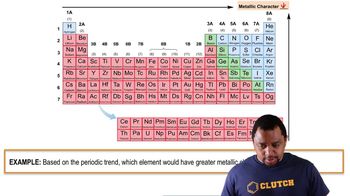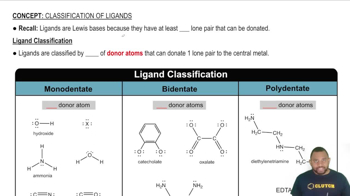Here are the essential concepts you must grasp in order to answer the question correctly.
Ionic Character
Ionic character refers to the degree to which a bond between two atoms has ionic characteristics, as opposed to covalent characteristics. It is influenced by the difference in electronegativity between the bonded atoms; larger differences typically indicate higher ionic character. This concept is crucial for understanding how to classify compounds based on their bonding nature.
Recommended video:
Metallic Character Example
Electronegativity
Electronegativity is a measure of an atom's ability to attract and hold onto electrons in a chemical bond. The Pauling scale is commonly used to quantify electronegativity values, with higher values indicating a stronger attraction for electrons. Understanding electronegativity helps predict the type of bond (ionic or covalent) that will form between different elements.
Recommended video:
Oxide Classification
Oxides can be classified based on their properties and the elements involved. Metal oxides, such as K2O, typically exhibit higher ionic character due to the presence of metals with low electronegativity, while non-metal oxides, like SiO2 and P4O10, often have more covalent character. Recognizing these classifications aids in arranging oxides by their ionic character.
Recommended video:
 Verified step by step guidance
Verified step by step guidance

